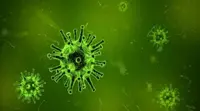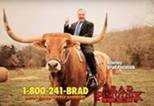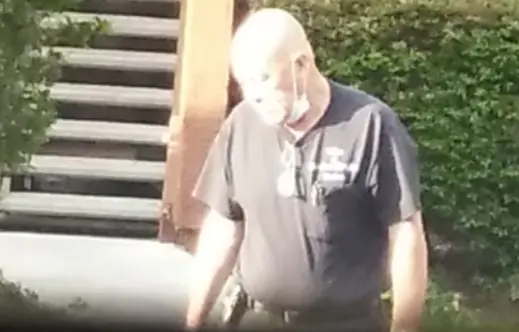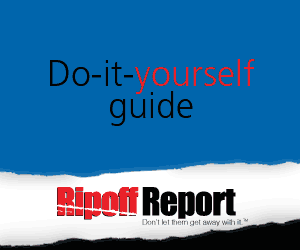Complaint Review: Monitronics Internatinal & Platinum Protection - Orem Utah
- Monitronics Internatinal & Platinum Protection 580 South State Street Orem, Utah U.S.A.
- Phone: 800-447-9239
- Web:
- Category: Security Services
Monitronics Internatinal & Platinum Protection FAULTY SYSTEM AND NO MONITORING SERVICE Orem Utah
*Consumer Comment: Dog Labrador Dog Dogs
*Consumer Comment: poodle dog breed
*Consumer Comment: Dogs DOgs Dogs
*Consumer Comment: Labradoodle Labradoodle Labradoodle
*UPDATE Employee: Employee percpective
*UPDATE Employee: Employee percpective
*UPDATE Employee: Employee percpective
*Consumer Comment: Are they really that bad?
*Author of original report: Monitronics, solved
*REBUTTAL Owner of company: I will help you with the problems you have had
*Consumer Suggestion: You have ability to take action
*UPDATE EX-employee responds: Yeah they are crooked
*Author of original report: Monitronics International & Platinum Protection
listed on other sites?
Those sites steal
Ripoff Report's
content.
We can get those
removed for you!
Find out more here.
Ripoff Report
willing to make a
commitment to
customer satisfaction
Click here now..
This nightmare started when a door to door salesman came to my house selling alarm systems. She told me that they were installing free systems for some homes in order to promote their company. They would do it for free if we put a "Monitronics" sign in our front yard.
When we moved in the house there was already an existing system, but we never set it up. She explained that they could upgrade the control panel and add to the system at no additional cost. Since there was no fire protection in the existing system, and they would add the fire alarm at no cost, with keyless entry, and a few more sensors, we figured why not. Sounds like a good promotional deal.
We agreed to a 3 year contract @ $44.99 with a $99.00 install fee spread over the first three months. This did not seem like a bad plan since we did not have a landline phone, just voice over IP, they threw in a 499.00 cellular transmitter at no additional cost.
All in all we received (2) Keyless Entry Remotes, an additional window sensor in the basement, a motion detector in the garage, an incorporated fire alarm, an upgraded control panel, and a cellular transmitter. They said this was all free in exchange for putting their sign in our front yard.
On 4/10/2007 we signed the contract around 7:00pm. During this process our sales representative called her company Platinum Protection, to verify personal information and set up the account. We PERSONALLY GAVE OUR PRIMARY, SECONDARY, HOME, AND WORK phone numbers to call in case of a security breach, emergency, and/or a fire.
After that was concluded she called the "Installation Team" to set up an appointment. She said that the install would only take an hour or so and that they could squeeze one more in for the night. The appointment was made for 8:30pm on that same day. This did not seem like a reasonable business practice to us, but we agreed. I should have known from this point on that this was not going to be an unpleasant experience.
This "Install Team" did not show up until 9:30pm, they were not in any sort professional uniform, neither was the sale representative, expect for some cheesy ID card around their necks. They did not get the job done until around 11:00pm, and that was after sitting on hold with their own activation team for about 20 min.
When they left, they assured me that the monitoring company was receiving signals and that the system was working. They gave me a demonstration and instructions for basic operation of the system.
My wife and I went out of town from 5/4/2007 to 5/6/2007. We set the alarm before we left. We assumed everything went ok while we were gone. We did not receive any phones calls regarding burglary or fire.
On 5/12/2007 I was mowing my lawn when my neighbor approached me. He said "Did you get the alarm thing figured out? I was puzzled; I did not know what he was talking about. He said that on 5/6/2007, prior to us returning I guess, that our alarm system was going off "all morning" as he put. He never seen any police dispatched or anyone else for that matter check on our house. He walked over, got the phone number of the MONITRONICS sign and called them. Opposed to contacting the correct people they are obligated to under contract, they remotely shut off the system.
While our system was going off, our home potentially being robbed or burned down, we were not notified. They did not call the authorities, primary contacts, secondary contacts, home phone (pointless) or work phones.
I would like to say at this point, Platinum Protection & Montronics both breached their own contract. The first clause of the contract that I signed with Platinum Protection says, and I quote, "Company, or its contractor, upon receipt signal from Customers Premises indicating that the System has been activated, IS RESPONSIBLE ONLY FOR ENDEAVORING TO NOTIFY THE POLICE, FIRE, MEDICAL SERVICES UNIT, GUARD SERVICE, OTHER AUTHORITIES, OR OTHER PERSONS WHOSE NAMES AND TELEPHONE NUMBERS ARE SET FORTH IN THE SUBSCRIBER CONTACT LIST TO BE COMPLETED AND SUBMITTED TO COMPANY"
So by failing to contact myself, my wife, the police, the fire department, our secondary contacts, our home phone (pointless), and our work phones, they breached their own contract.
This is where the run around starts.
Being very puzzled and confused I called Monitronics, the company name and number posted in my front yard. They confirmed receiving signals and notifying the property owner. They didn't call me or my secondary contacts. He read several different phone numbers, none of which were my listed contacts on the contract I had right in front of me. He advised me to call the "broker" of the contract, Platinum Protection.
I then did as he instructed and called Platinum Protection. After being transferred a few times I finally got to tell my story. They told me I need to call Monitronics back and verify my contact information. I said that I had already talked to Monitronics, and they told me to call you. (Platinum Protection). They then transferred me again to a "supervisor". She told me that she would call Monitronics and see what was going on.
She called me back about 20 minutes later and said she had set up the account correctly with the right information. She assured me that everything was ok.
I then took it upon myself to call Monitronics back to test the system. The Monitronics customer service representative had me trip the system. He said they received the signals and that everything was ok. He than abruptly ended the conversation saying, he needed to cancel the call, if any, to the authorities.
Again, we assumed everything was ok with the system. We figured that we were entitled to a credit for the first month of monitoring service that we paid for but did not receive due to the account being set up incorrectly. No fault of our own mind you.
So again, I called Platinum Protection. I, again, got the usual run around until I was pawned off on some poor sap. I, again, told my story. The customer service representative then told me she would have to contact Monitronics, verify what I had said, talk to her accounting department, and then calls me back with a verdict.
She called me back about a half an hour later. She told me that they could give me a credit for the first month of service. (Admitting I was not being monitored.) She then informed that they needed to send a technician out because it appeared that my system was not working. (Relayed through her from Montitronics.)
This is where I lost it. I was pleased with them giving me a credit that I was entitled to. HOW WAS MY SYSTEM NOT WORKING? THEY TOLD ME SEVERAL TIMES THAT IT WAS!!!
By this time I was sure that I was dealing with two very incompetent companies that are not in the least bit customer oriented. Can I trust them with my house and everything I had worked for? Absolutely not.
I refused to have a tech come to my house. I wanted to cancel my service, and demanded a refund for the monitoring service. I had paid for installation of the new equipment. (I paid for the installation of a system that did not work, and paid for a monitoring service that I did not receive.)
She then told me that we would have to pay 80% of the contract per the cancellation terms of the contract. I was outraged. Why should I be entitled to hold my end of the contract if they did not hold theirs?
To me, that is like getting a car loan to buy a new car. , paying all of the payments on time for the first few months. Then the bank comes and takes the car back, then expects you to pay 80% of the loan. That is nonsense and a scam. Or should I say MON-sense?
I pleaded my case to the representative, even the breach of contract on their part scenario, to no avail. She said that since they offered to fix the problem, it was not a breach of contract. Even though no where in their contract does it state that they reserve that right.
After a very heated conversation I refused to give them another dime. I immediately closed the checking account they were withdrawing the money from.
A few weeks later we received a bill for another month's service. Fearing judgment and/or credit damage, we contacted them (PLATINUM PROCTECTION on 8/6/2007. They said they would review the matter.
I have to call back, again, tomorrow to talk to a customer service manager. I don't feel that they will resolve this tomorrow.
Further more, in the bottom clause it is read as follows:
"THIS AGREEMENT SHALL NOT BE BINDING UPON COMPANY UNLESS EITHER APPROVED IN WRITING BY AN OFFICER OF COMAPNY OR COMPANY BEGINS MONITORING SERVICE." An officer from the company never signed the contract on their behalf; and according to their customer service team was I never properly being monitored. Contract was never legally binding. Thanks for playing.
Brianmilliner
west valley city, Utah
U.S.A.
Click here to read other Rip Off Reports on Monitronics International
This report was posted on Ripoff Report on 08/07/2007 12:41 AM and is a permanent record located here: https://www.ripoffreport.com/reports/monitronics-internatinal-platinum-protection/orem-utah-84058/monitronics-internatinal-platinum-protection-faulty-system-and-no-monitoring-service-ore-265728. The posting time indicated is Arizona local time. Arizona does not observe daylight savings so the post time may be Mountain or Pacific depending on the time of year. Ripoff Report has an exclusive license to this report. It may not be copied without the written permission of Ripoff Report. READ: Foreign websites steal our content
If you would like to see more Rip-off Reports on this company/individual, search here:
#13 Consumer Comment
Dog Labrador Dog Dogs
AUTHOR: Rabi Cityr - (United States of America)
SUBMITTED: Friday, July 15, 2011
The Labrador Retriever (also Labrador, or Lab for short) is one of several kinds of retriever, a type of gun dog. A breed characteristic is webbed paws for swimming, useful for the breed's original purpose of retrieving fishing nets. The Labrador is the most popular breed of dog by registered ownership in Canada,[4] the United Kingdom,[5] and the United States (since 1991).[6] It is also one of the most popularassistance dog breeds in Australia, Canada, the United Kingdom and the United States and many other countries, as well as being widely used by police and other official bodies for their detection and working abilities. Typically, Labradors are athletic and love to swim, play catch and retrieve games, are good with young children, and for protection.[7]Contents [hide]1 History1.1 Early descriptions1.2 Name1.3 Historical landmarks1.4 History of subtypes2 Description2.1 Appearance2.1.1 Official breed standards2.1.2 Colour2.1.2.1 Nose and skin pigmentation2.1.3 Show and field lines3 Temperament3.1 Exploration3.2 Use as working dogs4 Health4.1 Inherited disorders4.2 Obesity5 Appearance around the world5.1 Demography5.2 US Military Working Dogs (War Dogs); Labrador Retrievers in the Vietnam War6 Famous labradors7 Labrador hybrids8 See also9 References10 Further reading11 External links[edit]HistoryNell A St. John's Water Dog circa 1856The modern Labrador's ancestors originated on the island of Newfoundland, now part of the province of Newfoundland and Labrador, Canada.[8] The founding breed of the Labrador was the St. John's Water Dog, a breed that emerged through ad-hoc breedings by early settlers of the island in the 16th century.[8] The forebears of the St. John's Dog are not known, but were likely a random-bred mix of English, Irish, and Portuguese working breeds. The Newfoundland (known then as the Greater Newfoundland) is likely a result of the St. John's Dog breeding with mastiffs brought to the island by the generations of Portuguese fishermen who had been fishing offshore since the 16th century. The smaller short-coated St. John's Dog (also known then as the Lesser Newfoundland) was used for retrieval and pulling in nets from the water. These smaller dogs were the forebears of the Labrador Retriever. The white chest, feet, chin, and muzzle - known as tuxedo markings - characteristic of the St. John's Dog often appear in modern Lab mixes, and will occasionally manifest in Labradors as a small white spot on the chest (known as a medallion) or stray white hairs on the feet or muzzle.The St. John's area of Newfoundland was settled mainly by the English and Irish. Local fishermen originally used the St. John's dog to assist in carrying ropes between boats, towing dories, and helping to retrieve fishnets in the water. The Labrador's loyalty and hard working behaviour were valuable assets for fishermen.[9]A number of St. John's Dogs were brought back to the Poole area of England in the early 19th century,[8] then the hub of the Newfoundland fishing trade, by the gentry, and became prized as sporting andwaterfowl hunting dogs.[8] A few kennels breeding these grew up in England; at the same time a combination of sheep protection policy (Newfoundland) and rabies quarantine (England) led to their gradual demisein their country of origin.[10]A surviving picture of Buccleuch Avon (b.1885), a foundational dog of many modern Labrador lineages.The first and second Earls of Malmesbury, who bred for duck shooting on his estate,[11] and the 5th and 6th Dukes of Buccleuch, and youngest son Lord George William Montagu-Douglas-Scott,[11] were instrumental in developing and establishing the modern Labrador breed in 19th century England. The dogs Avon ("Buccleuch Avon") and Ned given by Malmesbury to assist the Duke of Buccleuch's breeding program in the 1880s are considered the ancestors of all modern Labradors.[12]The first St. John's dog was said to be brought to England around 1820; however, the breed's reputation had spread to England long before. There is a story that the Earl of Malmesbury saw a St. John's Dog on a fishing boat and immediately made arrangements with traders to have some of these dogs exported to England. These ancestors of the first labradors so impressed the Earl with their skill and ability for retrieving anything within the water and on shore that he devoted his entire kennel to developing and stabilising the breed.[9][edit]Early descriptionsSeveral early descriptions of the St. John's Water Dog exist. In 1822, explorer W.E. Cormack crossed the island of Newfoundland by foot. In his journal he wrote "The dogs are admirably trained as retrievers in fowling, and are otherwise useful.....The smooth or short haired dog is preferred because in frosty weather the long haired kind become encumbered with ice on coming out of the water."[13]Another early report by a Colonel Hawker described the dog as "by far the best for any kind of shooting. He is generally black and no bigger than a Pointer, very fine in legs, with short, smooth hair and does not carry his tail so much curled as the other; is extremely quick, running, swimming and fighting....and their sense of smell is hardly to be credited...."[13]In his book Excursions In and About Newfoundland During the Years 1839 and 1840,[14] the geologist Joseph Beete Jukes describes the St. John's Water Dog. "A thin, short-haired, black dog came off-shore to us to-day. The animal was of a breed very different from what we understand by the term Newfoundland dog in England. He had a thin, tapering snout, a long thin tail, and rather thin, but powerful legs, with a lank body, the hair short and smooth." wrote Jukes. "These are the most abundant dogs in the country...They are no means handsome, but are generally more intelligent and useful than the others...I observed he once or twice put his foot in the water and paddled it about. This foot was white, and Harvey said he did it to "toil" or entice the fish. The whole proceeding struck me as remarkable, more especially as they said he had never been taught anything of the kind."[edit]NameThe foundational breed of what is now the Labrador Retriever was known as the St. John's Water Dog, St. John's Dog, or Lesser Newfoundland. When the dogs were later brought to England, they were named after the geographic area known as "the Labrador" or simply Labrador to distinguish them from the larger Newfoundland breed, even though the breed was from the more southern Avalon Peninsula.[edit]Historical landmarksThe last two known St. John's Dogs, photographed in rural Newfoundland, ca. 1981.The first written reference to the breed was in 1814 ("Instructions to Young Sportsmen" by Colonel Peter Hawker),[8] the first painting in 1823 ("Cora. A Labrador b***h" by Edwin Landseer),[8] and the first photograph in 1856 (the Earl of Home's dog "Nell", described both as a Labrador and a St. Johns dog).[10] By 1870 the name Labrador Retriever became common in England.[8] The first yellow Labrador on record was born in 1899 (Ben of Hyde, kennels of Major C.J. Radclyffe),[8] and the breed was recognised by The Kennel Club in 1903. The first American Kennel Club (AKC) registration was in 1917.[8] The chocolate Labrador emerged in the 1930s,[8] although liver spotted pups were documented being born at the Buccleuch kennels in 1892.[8] The St. John's dog survived until the early 1980s, the last two individuals being photographed in old age around 1981.[10][edit]History of subtypesYellow and chocolate pups, would occasionally appear (although often culled), until finally gaining acceptance in the 20th century.The first recognised yellow Labrador was Ben of Hyde, born 1899, and chocolate Labradors became more established in the 1930s.Ben of Hyde (b.1899), the first recognised yellow Labrador.Yellow (and related shades)In the early years of the breed through to the mid-20th century, Labradors of a shade we would now call "yellow" were in fact a dark, almost butterscotch, colour (visible in early yellow Labrador photographs). The shade was known as "Golden" until required to be changed by the UK Kennel Club, on the grounds that "Gold" was not actually a colour. Over the 20th century a preference for far lighter shades of yellow through to cream prevailed, until today most yellow Labradors are of this shade. Also fawn has been a common colour in the yellow lab variety.[15]Interest in the darker shades of gold and fox red were re-established by English breeders in the 1980s, and three dogs were instrumental in this change: Balrion King Frost (black, born approx. 1976) who consistently sired "very dark yellow" offspring and is credited as having "the biggest influence in the re-development of the fox red shade",[15] and his great-grandson, the likewise famous Wynfaul Tabasco (b.1986),[16] described as "the father of the modern fox red Labrador", and the only modern fox red Show Champion in the UK. Other dogs, such as Red Alert and Scrimshaw Placido Flamingo, are also credited with passing on the genes into more than one renowned bloodline.[15]Chocolate labradorsJack Vanderwyk traces the origins of all Chocolate labradors listed on the LabradorNet database (some 34,000 Labrador dogs of all shades) to eight original bloodlines. However, the shade was not seen as a distinct colour until the 20th century; before then according to Vanderwyk, such dogs can be traced but were not registered. A degree of crossbreeding with Flatcoat or Chesapeake Bay retrievers was also documented in the early 20th century, prior to recognition. Chocolate labradors were also well established in the early 20th century at the kennels of the Earl of Feversham, and Lady Ward of Chiltonfoliat.[17]The bloodlines as traced by Vanderwyk each lead back to three black labradors in the 1880sBuccleuch Avon (m), and his sire and dam, Malmesbury Tramp (m), and Malmesbury June (f). Morningtown Tobla is also named as an important intermediary, and according to the studbook of Buccleuch Kennels, the chocolates in tthis kennel came through FTW Peter of Faskally (1908).[17][edit]DescriptionA black Labrador from English stock.A Yellow LabradorA Black Labrador of American field stock[edit]AppearanceLabradors are relatively large, with males typically weighing 29 to 41 kg (64 to 90 lb) and females 25 to 32 kg (55 to 71 lb). Labradors weighing close to or over 100 lb (45 kg) are considered obese or having a major fault under American Kennel Club standards, although some Labradors weigh significantly more.[18] The majority of the characteristics of this breed, with the exception of colour, are the result of breeding to produce a working retriever.As with some other breeds, the Conformation (typically "English", "show" or "bench") and the Field (typically "American" or "working") lines differ, although both lines are bred in both countries. In general, however, Conformation Labradors tend to be bred as medium-sized dogs, shorter and stockier with fuller faces and a slightly calmer nature than their Field counterparts, which are often bred as taller, lighter-framed dogs, with slightly less broad faces and a slightly longer nose; however Field Labradors should still be proportional and fit within AKC standards. With field Labradors, excessively long noses, thin heads, long legs and lanky frames are not considered standard. These two types are informal and not codified or standardized; no distinction is made by the AKC or other kennel clubs, but the two types come from different breeding lines. Australian stock also exists; though not seen in the west, they are common in Asia.The breed tends to shed hair twice annually, or regularly throughout the year in temperate climates.[12] Some Labradors shed considerably; however, individual Labradors vary.[19] Labrador hair is usually fairly short and straight, and the tail quite broad and strong. The otter-like tail and webbed toes of the Labrador Retriever make them excellent swimmers. The webbing between their toes can also serve as a "snowshoe" in colder climates and keep snow from balling up between their toes- a condition that can be painful to other breeds with hair between the toes. Their interwoven coat is also relatively waterproof, providing more assistance for swimming.[edit]Official breed standardsThere is a great deal of variety among Labradors. The following characteristics are typical of the conformation show bred (bench-bred) lines of this breed in the United States, and are based on the AKC standard.[18] Significant differences between UK and US standards are noted.Size: Labradors are a medium but compact breed. They should have an appearance of proportionality. They should be as long from the withers to the base of the tail as they are from the floor to the withers. Males should stand 22.5 to 24.5 inches (57 to 62 cm) tall at the withers and weigh 65 to 80 lb (29 to 36 kg). Females should stand 21.5 to 23.5 inches (55 to 60 cm) and weigh 55 to 70 lb (25 to 32 kg). By comparison under UK Kennel Club standards, height should be 22 to 22.5 inches (56 to 57 cm) for males, and 21.5 to 22 inches (55 to 56 cm) for females.[20]Coat: The Lab's coat should be short and dense, but not wiry. The coat is described as 'water-resistant' or more accurately 'water-repellent' so that the dog does not get cold when taking to water in the winter. That means that the dog naturally has a slightly dry, oily coat. Acceptable colours are black, yellow (ranging from ivory or creme to fox red), and chocolate.Head: The head should be broad with a pronounced stop and slightly pronounced brow. The eyes should be kind and expressive. Appropriate eye colours are brown and hazel. The lining around the eyes should be black. The ears should hang close to the head and are set slightly above the eyes.Jaws: The jaws should be strong and powerful. The muzzle should be of medium length, and should not be too tapered. The jaws should hang slightly and curve gracefully back.Body: The body should be strong and muscular with a level top line.The tail and coat are designated "distinctive [or distinguishing] features" of the Labrador by both the Kennel Club and AKC.[18][20] The AKC adds that "true Labrador Retriever temperament is as much a hallmark of the breed as the 'otter' tail."[18][edit]ColourThe three primary color varieties of the Labrador RetrieverLabrador Retrievers are registered in three colours:[18] black (a solid black colour), yellow (anything from light cream to "fox-red"), and chocolate (medium to dark brown). Some Labrador retrievers can have markings such as white patches on their chest and other areas, but most commonly they are one solid color.Puppies of all colours can potentially occur in the same litter. Colour is determined primarily by two genes. The first gene (the B locus) determines the density of the coat's pigment granules: dense granules result in a black coat, sparse ones give a chocolate coat. The second (D) locus determines whether the pigment is produced at all. A dog with the recessive d allele will produce little pigment and will be yellow regardless of its genotype at the B locus.[21] Variations in numerous other genes control the subtler details of the coat's colouration, which in yellow Labradors varies from white to light gold to a fox red. Chocolate and black Labradors' noses will match the coat colour.According to a 2011 study, 13 out of 245 Labradors studied were heterozygous for the M264V mutation responsible for melanistic masks, and one was homozygous. This masking is not visible within the breed because of the colors that the coat comes in.[22][edit]Nose and skin pigmentationBecause Labrador colouration is controlled by multiple genes, it is possible for recessive genes to emerge some generations later and also there can sometimes be unexpected pigmentation effects to different parts of the body. Pigmentation effects appear in regard to yellow Labradors, and sometimes chocolate, and hence the majority of this section covers pigmentation within the yellow Labrador. The most common places where pigmentation is visible are the nose, lips, gums, feet, tail, and the rims of the eyes, which may be black, brown, light yellow-brown ("liver", caused by having two genes for chocolate),[23] or several other colours. A Labrador can carry genes for a different color, for example a black Labrador can carry recessive chocolate and yellow genes, and a yellow Labrador can carry recessive genes for the other two colors. DNA testing can reveal some aspects of these. Less common pigmentations (other than pink) are a fault, not a disqualification, and hence such dogs are still permitted to be shown.[23] The intensity of black pigment on yellow Labradors is controlled by a separate gene independent of the fur coloring.[23] Yellow Labradors usually have black noses, which may gradually turn pink with age (called "snow nose" or "winter nose"). This is due to a reduction in the enzyme tyrosinase which indirectly controls the production of melanin, a dark coloring. Tyrosinase is temperature dependenthence light colouration can be seasonal, due to cold weatherand is less produced with increasing age two years old onwards. As a result, the nose color of most yellow Labradors becomes a somewhat pink shade as they grow older.[23]A colouration known as "Dudley" is also possible. Dudleys are variously defined as yellow Labradors which have unpigmented (pink) noses (LRC), yellow with liver/chocolate pigmentation (AKC), or "flesh coloured" in addition to having the same colour around the rims of the eye, rather than having black or dark brown pigmentation.[12][23] A yellow Labrador with brown or chocolate pigmentation, for example, a brown or chocolate nose, is not necessarily a Dudley, though according to the AKC's current standard it would be if it has chocolate rims around the eyes (or more accurately of the genotype eebb). Breed standards for Labradors considers a true Dudley to be a disqualifying feature in a conformation show Lab, such as one with a thoroughly pink nose or one lacking in any pigment along with flesh coloured rims around the eyes. True Dudleys are extremely rare.[23][24]Breeding in order to correct pigmentation often lacks dependability. Because colour is determined by many genes, some of which are recessive, crossbreeding a pigmentation non-standard yellow Labrador to a black Labrador may not correct the matter or prevent future generations carrying the same recessive genes. For similar reasons, crossbreeding chocolate to yellow Labradors is also often avoided.[edit]Show and field linesHead and muzzle appearance: American or field (left), and English or show (right), showing the shorter muzzle length, more solid appearance head, and "pronounced" stop of the latter.There are significant differences between field and trial-bred (sometimes referred to as "American") and show-bred (or "English") lines of Labradors, arising as a result of specialised breeding. Dogs bred for hunting and field-trial work are selected first for working ability, where dogs bred to compete in conformation shows are selected for their conformation to the standards and characteristics sought by judges in the show ring.While individual dogs may vary, in general show-bred Labradors are heavier built, slightly shorter-bodied, and have a thicker coat and tail. Field Labradors are generally longer legged, lighter, and more lithe in build. In the head, show Labradors tend to have broader heads, better defined stops, and more powerful necks, while field Labradors have lighter and slightly narrower heads with longer muzzles.[25][26] Field-bred Labradors are commonly higher energy and more high-strung compared to the Labrador bred for conformation showing, and as a consequence may be more suited to working relationships than being a "familypet".[25][26] Some breeders, especially those specialising in the field type, feel that breed shows do not adequately recognise their type of dog, leading to occasional debate regarding officially splitting the breed into subtypes.[27]In the United States, the AKC and the Labrador's breed club have set the breed standard to accommodate the field-bred Labrador somewhat. For instance, the AKC withers-height standards allow conformation dogs to be slightly taller than the equivalent British standard.[28] However, dual champions, or dogs that excel in both the field and the show ring, are becoming more unusual.[29][edit]TemperamentA Labrador participating in dog agilityThe AKC describes the Labrador's temperament as a kind, outgoing and tractable nature. Labradors' sense of smell allows them to hone in on almost any scent and follow the path of its origin. They generally stay on the scent until they find it. Labradors instinctively enjoy holding objects and even hands or arms in their mouths, which they can do with great gentleness (a Labrador can carry an egg in its mouth without breaking it).[30] They are also known to have a very soft feel to the mouth, as a result of being bred to retrieve game such as waterfowl. They are prone to chewing objects (though they can be trained out of this behavior). The Labrador Retriever's coat repels water to some extent, thus facilitating the extensive use of the dog in waterfowl hunting.Labradors have a reputation as a very even-tempered breed and an excellent family dog. This includes a good reputation with children of all ages and other animals.[12] But some lines (particularly those that have continued to be bred specifically for their skills at working in the field rather than for their appearance) are particularly fast and athletic. Their fun-loving boisterousness and lack of fear may require training and firm handling at times to ensure it does not get out of handan uncontrolled adult can be quite problematic. Females may be slightly more independent than males.[12] Labradors mature at around three years of age; before this time they can have a significant degree of puppy-like energy, often mislabelled as being hyperactive.[12][31] Because of their enthusiasm, leash-training early on is suggested to prevent pulling when full-grown.[32] Labradors often enjoy retrieving a ball endlessly and other forms of activity (such as agility, frisbee, or flyball).Although they will sometimes bark at noise, especially noise from an unseen source ("alarm barking"), Labradors are usually not noisy[12] or territorial. They are often very easygoing and trusting with strangers, and therefore are not usually suitable as guard dogs.[12]Labradors have a well-known reputation for appetite, and some individuals may be highly indiscriminate, eating digestible and non-food objects alike.[30] They are persuasive and persistent in requesting food. For this reason, the Labrador owner must carefully control his/her dog's food intake to avoid obesity and its associated health problems (see below).[30]The steady temperament of Labradors and their ability to learn make them an ideal breed for search and rescue, detection, and therapy work. They are a very intelligent breed. They are ranked # 7 in Stanley Coren's book " The Intelligence of dogs". The AKC describes the breed as an ideal family and sporting dog. Their primary working role in the field continues to be that of a hunting retriever.[edit]ExplorationChocolate Labrador in the water at the beachThey do not typically jump high fences or dig. Because of their personalities, some Labradors climb and/or jump for their own amusement. As a breed they are highly intelligent and capable of intense single-mindedness and focus if motivated or their interest is caught. Therefore, with the right conditions and stimuli, a bored Labrador could "turn into an escape artist par excellence".[12][33]Labradors as a breed are curious, exploratory and love company, following both people and interesting scents for food, attention and novelty value. In this way, they can often "vanish" or otherwise become separated from their owners with little fanfare.[34] They are also popular dogs if found, and at times may be stolen.[35] Because of this a number of dog clubs and rescue organizations (including the UK's Kennel Club) consider it good practice that Labradors be microchipped, with the owner's name and address also on their collar and tags.[34][36][edit]Use as working dogsLabradors are an intelligent breed with a good work ethic and generally good temperaments (breed statistics show that 92.3% of Labradors who were tested passed the American Temperament Test.[37]) Common working roles for Labradors include: hunting, tracking and detection (they have a great sense of smell which helps when working in these areas), disabled-assistance, carting, and therapy work.[38] Approximately 6070% of all guide dogs in Canada are Labradors; other common breeds are Golden Retrievers and German Shepherd Dogs.[39]Labradors are powerful and indefatigable swimmers noted for their ability to tolerate the coldest of water for extended periods of time. Their ability to work quietly alongside hunters while watching for birds to fall from the sky, marking where they land, and then using their outstanding nose to find and retrieve dead or wounded birds has made them the king of waterfowl retrievers.[40]A fox red English line Labrador retriever returns successfully from a pond retrieve.The high intelligence, initiative and self-direction of Labradors in working roles is exemplified by dogs such as Endal, who during a 2001 emergency placed an unconscious human being in the recovery position, retrieved his mobile phone from beneath the car, fetched a blanket and covered him, barked at nearby dwellings for assistance, and then ran to a nearby hotel to obtain help.[41] A number of Labradors have also been taught to assist their owner in removing money and credit cards from ATMs with prior training.[42]The breed is used in water rescue/lifesaving. It continues in that role today, along with the Leonberger, Newfoundland and Golden Retriever dogs; they are used at the Italian School of Canine Lifeguard.[43][edit]HealthMany dogs, including Labradors such as this twelve year old, show distinct whitening of the coat as they grow older; especially around the muzzle.Labrador pups generally are not brought to the home before they are 8 weeks old.[44] Their life expectancy is generally 10 to 12 years,[2] and it is a healthy breed with relatively few major problems. Notable issues related to health and well-being include:[edit]Inherited disordersLabradors are somewhat prone to hip and elbow dysplasia,[45] especially the larger dogs,[46] though not as much as some other breeds.[47] Hip scores are recommended before breeding and often joint supplements are recommended.Labradors also suffer from the risk of knee problems. A luxating patella is a common occurrence in the knee where the leg is often bow shaped.Eye problems are also possible in some Labradors, particularly progressive retinal atrophy, cataracts,[48] corneal dystrophy[45] and retinal dysplasia. Dogs which are intended to be bred should be examined by a veterinary ophthalmologist for an eye score.Hereditary myopathy, a rare inherited disorder that causes a deficiency in type II muscle fibre. Symptoms include a short stilted gait or "bunny hopping," and in rare cases ventroflexion of the neck accompanied by a kyphotic posture.[49]There is a small incidence of other conditions, such as autoimmune diseases and deafness in Labradors, either congenitally or later in life.[19]Labradors often suffer from exercise induced collapse, a syndrome that causes hyperthermia, weakness, collapse, and disorientation after short bouts of exercise.[50][edit]ObesityLabradors like to eat and without adequate exercise, can become obese. Laziness also contributes to this. A healthy Labrador can do swimming wind sprints for two hours, and should keep a very slight hourglass waist and be fit and light, rather than fat or heavy-set. When they are fat, they usually develop hip dysplasia or other joint problems and get diabetes. Osteoarthritis is common in older, especially overweight, Labradors. A 14 year study covering 48 dogs by food manufacturer Purina showed that Labradors fed to maintain a lean body shape outlived those fed freely, by around two years, emphasizing the importance of not over-feeding.[51][edit]Appearance around the worldIn the United States, the breed gained wider recognition following a 1928 American Kennel Gazette article, "Meet the Labrador Retriever". Before this time, the AKC had only registered 23 Labradors in the country,[10] in part because US and UK hunting styles had different requirements.[52] Labradors acquired popularity as hunting dogs during the 1920s and especially after World War II, as they gained recognition as combining some of the best traits of the two favourite United States breeds as both game finders and water dogs.[52]Outside North America and Western Europe, the Labrador arrived later. For example, the Russian Retriever Club traces the arrival of Labradors to the late 1960s, as household pets of diplomats and others in the foreign ministry.[53] The establishment of the breed in the Commonwealth of Independent States (former USSR) was initially hindered by the relatively small numbers of Labradors and great distances involved, leading to difficulty establishing breedings and bloodlines;[53] at the start of the 1980s, home-born dogs were still regularly supplemented by further imports from overseas.[53] Difficulties such as these initially led to Labradors being tacitly cross-bred to other types of retriever.[53] In the 1990s, improved access to overseas shows and bloodlines is said to have helped this situation become regularised.[53][edit]DemographyMain article: List of most popular dog breedsThe Labrador is an exceptionally popular dog. For example as of 2006:Widely considered the most popular breed in the world.[54][55]Most popular dog by ownership in Australia,[56] Canada,[57] Israel.[58] New Zealand[59] UK,[60] and USA (since 1991),[61][62]In both the UK and USA, there are well over twice as many Labradors registered as the next most popular breed.[60][61] If the comparison is limited to dog breeds of a similar size, then there are around 3 - 5 times as many Labradors registered in both countries as the next most popular breeds, the German Shepherd and Golden Retriever.[60][61]Most popular breed of assistance dog in the United States, Australia and many other countries,[63] as well as being widely used by police and other official bodies for their detection and working abilities.[7] Approximately 6070% of all guide dogs in the United States are Labradors (see below).[39]Seven out of 13 of the Australian National Kennel Council "Outstanding Gundogs" Hall of Fame appointees are Labradors (list covers 20002005).[64]There is no global registry of Labradors, nor detailed information on numbers of Labradors living in each country. The countries with the five largest numbers of Labrador registrations as of 2005 are: 1: United Kingdom 2: France and United States (approximately equal), 4: Sweden, 5: Finland.[65][66] Sweden and Finland have far lower populations than the other three countries, suggesting that as of 2005 these two countries have the highest proportion of Labradors per million people:CountryPopulation
(millions)Labrador
registrationsRegistrations per
million pop.Finland5.22,236426.0France60.59,281153.4Sweden9.05,158570.5United Kingdom59.718,554311.0USA307.010,83336.3OFA statistics suggest that yellow and black Labradors are registered in very similar numbers (yellow slightly more than black); chocolate in lesser numbers.[65][66]Note: number of registrations is not necessarily the same as number of living dogs at any given time.[edit]US Military Working Dogs (War Dogs); Labrador Retrievers in the Vietnam WarThe Vietnam War is the only war in American history in which US war dogs, which were officially classified by the military as "military working dogs" were not allowed to officially return home after the war.[67] Classified as expendable equipment, of the approximate 4,000 US K-9s deployed to the Vietnam War it is estimated that only about 200 US war dogs survived Vietnam to be put into service at other out posts stationed over-seas.[68]The predominate canine selected by the US Military during the Vietnam War was the German Shepard which was utilized in the roles of Scout Dogs, Sentry Dogs, Mine Detection Dogs, and the US Navy used Water Dogs to detect enemy under water divers in South Vietnam. The Labrador Retriever was the military's choice for their Combat Tracker Teams (CTTs). Combat Tracker Teams consisted of one Labrador and four men; the handler, an observer, a security man, and the team leader.[69]Labradors were selected by the military for tracking because of their distinct smelling qualities, and were utilized to locate wounded US servicemen, enemy patrols, and downed allied airmen in Vietnam. The US Army Labrador Retrievers received their combat training at the British Army's Jungle Warfare School in Malaysia.[70]Of the over 4,000 US war dogs serving in the Vietnam War 232 were killed in action[71], and 295 US servicemen deployed as "dog handlers" were killed in action[72], of which one dog handler was awarded the Congressional Medal of Honor. Of these numbers 6 Labrador Retrievers were killed in battle while assigned to the 62nd and 63rd US Army Combat Tracking Teams.[73] During the course of the war the US Army lost 204 dogs, while the US Marine Corps and US Air Force lost 13 and 15 dogs respectively.In November 2000 President Clinton signed into law an amendment that allowed retired US military working dogs (war dogs) to be adopted by personnel outside of the military, leaving the Vietnam War as the only war in US history in which American war dogs never returned home.[74][75][edit]Famous labradorsMain article: List of LabradorsAs both the most popular breed by registered ownership and also the most popular breed for assistance dogs in several countries, there have been many notable and famous labradors since the breed was recognised.A selection of a few of the most famous labradors within various categories includes:Endal wearing his PDSA Gold Medal.Assistance dogsEndal, a service dog in Britain. Among other distinctions, "the most decorated dog in the world" (including "Dog of the Millennium"[76] and the PDSAs Gold Medal for Animal Gallantry and Devotion to Duty),[77] the first dog to ride on the London Eye and the first dog known to work a 'chip and pin' ATM card. By Endal's death in March 2009, he and his owner/handler Allen Parton had been filmed almost 350 times by crews from several countries, and a film of a year in Endal's life was in production.[78][79]Police, military, rescue and detection dogsZanjeer, a detection dog who detected arms and ammunition used in 1993 Mumbai (Bombay) serial explosions. During his service, his haul was excellent. He helped recover 57 country-made bombs, 175 petrol bombs, 11 military bombs, 242 grenades and 600 detonators. His biggest contribution to the police force and the city was the detection of 3,329 kg of RDX. He also helped detect 18 Type 56 rifles and five 9mm pistols.Lucky and Flo, twin Black Labrador counterfeit detection dogs who became famous in 2007 for "sniffing out nearly 2 million pirated counterfeit DVDs" on a six-month secondment to Malaysia in 2007.[80] Following the multi-million dollar, 6-arrest Malaysian detection, they became the first dogs to be awarded Malaysia's, "outstanding service award",[81] and software pirates were stated to have put a 30,000 contract out for their lives.[82][83]Sabi, an Australian special forces explosives detection dog that spent almost 14 months missing in action (MIA) in Afghanistan before being recovered safe and well in 2009.[84][85]PetsFormer President of the United States Bill Clinton's Labradors Buddy and Seamus.Former Russian President, and current Russian Prime Minister Vladimir Putin's Labrador 'Koni'.Fiction and mediaLabradors have featured variously as pets and significant characters in sitcoms and other TV shows, as well as other portrayals in the media. Bouncer in Neighbours, and Luath in The Incredible Journey, are two TV examples.Marley is an American Labrador featured in Marley & Me, a best-selling book by John Grogan, and a subsequent film based on Grogan's life and times with Marley.On the BBC the children's television series Big Barn Farm, Digger is a yellow Labrador puppy.Some Labradors have been featured in the manga/anime series Ginga Densetsu Weed, one of the most notable being Hook.Rowdy on Scrubs is a taxidermy golden Labrador Retriever involved in various gags on the show.Mascots and advertisingSince 1972, a yellow Labrador pup known as the Andrex Puppy has been an advertising symbol for Andrex (Cottonelle) toilet tissue.Michigan State University has an ongoing tradition of Zeke the Wonder Dog. The original "Zeke" was a yellow Lab, as is the current "Zeke III", and "Zeke II" was a black Lab.[edit]Labrador hybridsFurther information: Dog hybrids and crossbreedsThe Labradoodle is a "designer dog" that is a cross-bred Labrador and Poodle. A concept that originated in Australia, the intent of breeding this cross was to try and create a service dog suitable for allergy sufferers. However, there is no guarantee such a cross will inherit the hypo-allergenic poodle coat. Some assistance-dog groups use Golden RetrieverLabrador Retriever hybrids because they believe this cross produces dogs with excellent temperaments.[63]The assistance dog organisation Mira utilises Labrador-Bernese Mountain Dog crosses ("Labernese") with success.[86]
#12 Consumer Comment
poodle dog breed
AUTHOR: Turk - (USA)
SUBMITTED: Thursday, May 26, 2011
The Poodle is a breed of dog. The Standard Poodle is regarded as the second most intelligent breed of dog after the Border Collie, and before the German Shepherd Dog.[1] The poodle breed is found officially in toy, miniature, and standard sizes, with many coat colors. Originally bred as a type of water dog, the poodle is skillful in many dog sports, including agility, obedience, tracking, and even herding. Poodles have taken top honors in many conformation shows, including "Best in Show" at theWestminster Kennel Club Dog Show in 1991 and 2002, and at the World Dog Show in 2007 and 2010.Contents [hide]1 History2 Characteristics2.1 Appearance2.1.1 Poodle sizes2.1.2 Coat2.1.3 Show clips2.1.3.1 Second Puppy2.1.3.2 Continental clip2.1.3.3 English Saddle clip2.1.4 Pet clips2.1.5 Corded coat3 Temperament4 Health4.1 Addison's Disease4.2 Gastric dilatation volvulus4.3 Longevity and causes of death4.4 Common illnesses5 Poodle mixes6 Hypoallergenic qualities7 Famous poodles8 Notes9 References10 External linksHistoryA 17th century engraving of a poodle.Poodles are retrievers or gun dogs, and can still be seen in that role. The poodle is believed to have originated in Germany, where it is known as the Pudel. The English word "poodle" comes from the Low German pudel or puddeln,[2] meaning to splash in the water. The breed was standardized in France, where it was commonly used as a water retriever.[3]The American Kennel Club states that the large, or Standard, Poodle is the oldest of the three varieties[4] and that the dog gained special fame as a water worker. So widely was it used as retriever that it was bred with a moisture-resistant coat to further facilitate progress in swimming. All of the Poodle's ancestors were acknowledged to be good swimmers, although one member of the family, the truffle dog (which may have been of Toy or Miniature size), it is said, never went near the water. Trufflehunting was widely practiced in England, and later in Spain and Germany, where the edible fungus has always been considered a delicacy. For scenting and digging up the fungus, the smaller dogs were favored, since they did less damage to the truffles with their feet than the larger kinds. So it is rumored[5] that a terrier was crossed with the Poodle to produce the ideal truffle hunter.Despite the standard poodle's claim to greater age than the other varieties, there is some evidence to show that the smaller types developed only a short time after the breed assumed the general type by which it is recognized today. The smallest, or Toy variety, was developed in England in the 18th century, when the Havanese became popular there. This was a sleeve dog attributed to the West Indies from whence it traveled to Spain and then to England. The continent had known the poodle long before it came to England. Drawings by the German artist, Albrecht Durer, establish the breed in the 15th and 16th centuries. It was the principal pet dog of the later 18th century in Spain, as shown by the paintings of the Spanish artist Francisco Goya. France had toy poodles as pampered favorites during the reign of Louis XVI at about the same period.[6]CharacteristicsA Standard poodle retrieving a gamebird.The Miniature poodle, which is of intermediate size between Medium and Toy.A brown standard poodle at five weeks.A toy poodle at ten weeks.AppearanceMost poodles have a curly, non-shedding coat that requires regular grooming. Since poodles do not have the plush double coat of many breeds, their fur is often referred to as "hair", a term usually reserved for humans.[note 1] Most poodles are solid-colored, and many registries allow only solid colors in conformation shows. Poodles come in a wide variety of solid colors including white, black, blue, gray, silver, brown, cafe-au-lait, apricot, red and cream.[7] "Parti" (short for parti-colored) poodles have large patches of colors different from the main body color. "Phantom" poodles have tan points, a pattern similar to that of a Doberman Pinscher or Rottweiler.Poodle sizesUnlike most breeds, poodles can come in a variety of sizes, distinguished by adult shoulder (withers) height. The exact height cutoffs among the varieties vary slightly from country to country. Non-Fdration Cynologique Internationale kennel clubs generally recognize three sizes, standard, miniature, and toy, sometimes as sizes of the same breed, and sometimes as separate breeds. The Fdration Cynologique Internationale recognizes four sizes of one breed, standard, medium, miniature, and toy.[8] Only the Fdration Cynologique Internationale describes a maximum size for standard poodles. France is the country responsible for the breed in the Fdration Cynologique Internationale, and in this country the puppies of all sizes are listed together.[9] The terms royal standard, teacup, and tiny teacup are marketing names, and are not recognized by any major kennel club.Comparison of poodle sizes defined by major kennel clubs[10]SizeThe Kennel Club (UK)Australian National Kennel CouncilNew Zealand Kennel ClubCanadian Kennel ClubAmerican Kennel ClubUnited Kennel ClubFdration Cynologique InternationaleStandard, Grandeover 38 cm (15 ins)38 cm (15 ins) and over38 cm (15 ins) and overover 15 inches (38 cm)over 15 inches (38 cm)over 15 inches (38 cm)over 45 cm to 60 cm (+2 cm) (18ins to 24ins)Medium, Moyennot usednot usednot usednot usednot usednot usedover 35 cm to 45 cm (14ins to 18ins)Miniature - Dwarf, Nain28 cm to 38 cm (11ins to 15ins)28 cm to under 38 cm (11ins to 15ins)28 cm to under 38 cm (11ins to 15ins)over 10ins to under 15ins (25.4 cm to 38 cm)over 10ins to 15ins (25.4 cm to 38 cm)over 10ins up to 15ins (25.4 cm to 38 cm)over 28 cm to 35 cm (11ins to 14ins)Toyunder 28 cm (11 ins)under 28 cm (11 ins)under 28 cm (11 ins)under 10ins (25.4 cm)under 10ins (25.4 cm)under 10ins (25.4 cm)24 cm to 28 cm (9.4ins to 11ins)All the Fdration Cynologique Internationale poodles are in Group 9 Companion and Toy, Section 2 Poodle. All the Kennel Club poodles are in the Utility Group. All three sizes of poodle for the Australian National Kennel Council and the New Zealand Kennel Club are in the Non-Sporting Group. The Canadian Kennel Club and the American Kennel Club place standard and miniature sizes in the Non-Sporting Group, and the toy size in the Toy Group. The United Kennel Club places the miniature and toy in the Companion Group and the standard poodle in the Gundog Group.CoatUnlike most dogs which have double coats, poodles have a single layer (no undercoat) of dense, curly fur[11] that sheds minimally.[12] They could be considered hypoallergenic(though not completely allergen free).[13][14] Note that the poodle does shed, but instead of the fur coming off of the dog, it becomes tangled in the surrounding hair. This can lead to matting without proper care. Texture ranges from coarse and woolly to soft and wavy. Poodle show clips require many hours of brushing and care per week, about 10 hours/week for a standard poodle. Poodles are usually clipped down as soon as their show career is over and put into a lower-maintenance cut. Pet clips are much less elaborate than show and require much less maintenance. A pet owner can anticipate grooming a poodle every six to eight weeks. Although professional grooming is often costly, poodles are easy to groom at home with the proper equipment.Show clipsMany breed registries allow only certain clips for poodles shown in conformation. In American Kennel Club shows, adults must be shown in the "Continental" or "English saddle" clips. Dogs under 12 months old may be shown with a "puppy clip." The American Kennel Club allows the Sporting Clip in Stud Dog and Brood b***h classes as well.Some sources believe the show clips evolved from working clips, which originally provided warmth to major joints when the dogs were immersed in cold water. The rest of the body is shaved for less drag in the water. Others express skepticism at this theory, instead citing the French circus as the origin of the entertaining and unique clips.Second PuppyA medium sized poodle in the Scandinavian clipThis clip is also called the Scandinavian clip or puppy clip. It was invented by Swedish and Norwegian show groomers in the 1970s. This clip is the most common one in all sizes for shows in Europe, and is allowed for adult poodles to be shown in the FCI countries. The face, throat, belly, feet and the base of the tail are shaved 5 to 7 days before the show to get a nice smooth appearance of the shaved areas. The hair on the head is left to form a "topknot" that is fixed in place using latex bands; this is because in most European countries, hair spray is banned. The rest of the dog is shaped with scissors. It makes the parts of the dog look fluffy.Continental clipIn the continental clip the face, throat, feet and part of the tail are shaved. The upper half of the front legs is shaved, leaving "fluffy pompons" around the ankles. The hindquarters are shaved except for pompons on the lower leg (from the hock to the base of the foot) and optional round areas (sometimes called "rosettes") over the hips. The continental clip is the most popular show clip today.English Saddle clipThe English saddle clip is similar to the continental, except for the hindquarters. The hindquarters are not shaved except a small curved area on each flank (just behind the body), the feet, and bands just below the stifle (knee) and above the hock, leaving three pompoms. This clip is now rarely seen in standard poodles.Pet clipsPet clips can be as simple or as elaborate as owners wish. The hair under the tail should always be kept short to keep feces from matting in the poodle's curls. Most owners also keep the feet and face clipped short to prevent dirt from matting between toes and food from matting around the dog's muzzle. Beyond these sanitary requirements, desired clips depend on owners' preferences. Some owners maintain a longer clip in winter than summer, which they groom often with a wire slicker brush to remove tangles and prevent matting.Corded coatA corded standard poodleIn most cases, whether a poodle is in a pet or show clip, hair is completely brushed out. Poodle hair can also be "corded" with rope-like mats similar to those of aKomondor or human dreadlocks. Though once as common as the curly poodle, corded poodles are now rare. Corded coats are difficult to keep clean and take a long time to dry after washing. Any poodle with a normal coat can be corded when their adult coat is in. Corded poodles may be shown in all major kennel club shows.[15][16][17]TemperamentA standard poodle catchingOtherwise notable is this breed's keen sense for instinctual behavior. In particular, marking and hunting drives are more readily observable than in most other breeds. Even Toys will point birds. Classified as highly energetic, poodles can also get bored fairly easily and have been known to get creative about finding mischief. Poodles like to be in the center of things and are easily trained to do astonishing tricks involving both brains and agility. They have performed in circuses for centuries, beginning in Europe, and have been part of the Ringling Circus in its various forms from its inception. The Grimaldis, the famous British clowns Kenneth and Audrey Austin, "developed a stronger circus act" with a clever poodle named 'Twinkle,' the success of which allowed them to continue performing even as octogenarians."[18]Poodles are extremely people-oriented dogs and generally eager to please. Standard poodles in particular tend to be good with children. Poodles are adaptable and easy to train, but sometimes their intelligence can make them obstinate and stubborn. Like most dogs, they appreciate daily exercise, such as a walk or a play session. Most are fairly agile and athletic.Toy poodles will play ball and love to fetch. Play time is vital, but one must be sure that they get plenty of rest following long play periods and that fresh water is available at all times.Poodles are very easy to housebreak. Whether going outside or being trained on a pad, they learn quickly where to defecate. They are still animals, however, and they need time to understand what is desired of them. It may take a while, but poodles are quite smart and learn more quickly than most dogs.HealthA standard poodle at a baseball gameWith proper care and nutrition, many enjoy life well into their teens. The toy poodle pictured above is 16, and with arthritismedication still has an active life.The most common serious health issues of standard poodles (listed in order of the number of reported cases in the Poodle Health Registry (as of August 20, 2007) areAddison's disease, gastric dilatation volvulus (GDV = bloat/torsion), thyroid issues (hyperthyroid and hypothyroid), tracheal collapse, epilepsy, sebaceous adenitis, juvenile renal disease, hip dysplasia, and cancer. Standard poodles are also susceptible to some health issues usually too minor to report to the poodle health registry. The most common of these minor issues are probably ear infections. Ear infections are a problem in all poodle varieties. Ear problems can be minimized by proper ear care. A veterinarian should be consulted if the dog shows signs of an ear infection.Addison's DiseaseAddison's disease is (as of August 20, 2007) the illness most commonly reported to the Poodle Health Registry. The number of reported cases of Addison's disease is nearly twice as high as the next most common problem (GDV). Addison's disease is characterized by insufficient production of glucocorticoid and/or mineralocortoid in the adrenal cortex (by the kidneys). Addison's is often undiagnosed because early symptoms are vague and easily mistaken for other conditions. Standard poodles with unexplained lethargy, frequent gastric disturbances, or an inability to tolerate stress should be tested for Addison's. Addison's can cause fatal sodium/potassium imbalances, but, if caught early and treated with lifelong medication, most dogs can live a relatively normal life.Gastric dilatation volvulusStandard poodle owners should take special note of the high incidence of GDV in this breed. Excess gas trapped in the dog's stomach causes "bloat." Twisting of the stomach (volvulus or "torsion") causes or is caused by excess gas. Symptoms include restlessness, inability to get comfortable, pacing, or retching without being able to bring up anything. The dog's abdomen may be visibly swollen, but dogs can bloat or torsion without visible swelling. GDV is a dire emergency condition. If you suspect a dog is bloating, you should not wait to see if he improves. A dog with GDV requires immediate veterinary care. The dog's survival usually depends on whether the owner can get him to the vet in time. It is a good idea for a standard poodle owner to know the route to the nearest 24-hour emergency clinic, so time is not wasted looking for directions.Longevity and causes of deathStandard poodles in UK, Denmark and USA/Canada surveys had a median lifespan of 11.5 to 12 years.[19] In a UK survey, the most common causes of death were cancer (30%), old age (18%), GDV (bloat/torsion, 6%), and cardiac disease (5%).[20]Miniature and toy poodles in UK surveys had median lifespans of 14 to 14.5 years.[19] In miniature poodles, the leading cause of death was old age (39%).[20] In toy poodles, the leading causes of death were old age (25%) and kidney failure (20%).[20]Some toy poodles can live up to 20 years, if they have a healthy life and are not overweight.Common illnessesAddison's disease (hypoadrenocorticism)[21]Cataracts[21][22]Congenital heart diseaseChronic active hepatitis[21]Cushing's syndrome (hyperadrenocorticism)[21][22]DistichiasisEntropionEpilepsy[23]Gastric dilatation volvulus (Standard)[23]Gastric torsionGlaucoma[22]Intervertebral disc degenerationLacrimal duct atresiaLeggCalvPerthes syndromeProgressive retinal atrophyPatellar luxation (Toy and Miniature)[22]TrichiasisUrolithiasis.Hip dysplasia (Standard)[23]Hypothyroidism[23]Mitral valve disease[24]OsteosarcomaPatent ductus arteriosusSebaceous adenitisVon Willebrand diseasePoodle mixesMain article: Poodle hybridTwelve week old Cockapoo puppy.Poodles are crossed with other breeds for various reasons, and the resulting puppies (called designer dogs) are described by whimsical portmanteau words, such ascockapoo or spoodle (Cocker Spaniel cross), goldendoodle, labradoodle (Labrador cross), pekepoos (Pekingese cross), and many others.A cross between a shedding breed and a poodle (which does not shed much) does not reliably produce a non-shedding dog. Traits of puppies from crossbreedings are not as predictable as those from purebred poodle breedings, and the crosses may shed or have unexpected or undesirable qualities from the parent breeds.Poodle crossbreds (also called hybrids) are not recognized by any major breed registry, as crossbreeds are not one breed of dog, but two. If both parents are registered purebreds but of different breeds, it is still not possible to register a puppy as two different breeds. Some minor registries and Internet registry businesses will register dogs as any breed the owner chooses with minimal or no documentation; some even allow the breeder or owner to make up a new "breed name" (portmanteau word).Hypoallergenic qualitiesPoodles are often cited as a hypoallergenic dog breed. The poodle's individual hair follicles have an active growth period that is longer than that of many other breeds of dogs; combined with the tightly curled coat, which slows the loss of dander and dead hair by trapping it in the curls, an individual poodle may release less dander and hair into the environment. In addition, most poodles are frequently brushed and bathed to keep them looking their best; this not only removes hair and dander but also controls the other potent allergen, saliva.[25]Although hair, dander, and saliva can be minimized, they are still present and can stick to "clothes and the carpets and furnishings in your home"; inhaling them, or being licked by the dog, can trigger a reaction in a sensitive person. A vacuum cleaner with a HEPA filter can help clear dander floating in the air.[26]The word hypoallergenic, when referring to a dog, is also a misconception; all dogs shed. Poodles shed hair in minimal amounts, and also release dander, but are not as likely to trigger allergies as much as many other breeds.
#11 Consumer Comment
Dogs DOgs Dogs
AUTHOR: Turk - (USA)
SUBMITTED: Wednesday, April 20, 2011
The dog (Canis lupus familiaris[3] and Canis lupus dingo[1][2]) is a domesticated form of the gray wolf, a member of the Canidae family of the order Carnivora. The term is used for both feral and pet varieties. The dog was the first animal to be domesticated, and has been the most widely kept working, hunting, and companion animal in human history. The word "dog" may also mean the male of a canine species,[4] as opposed to the word "b***h" for the female of the species.[5]
Dogs were domesticated from gray wolves about 15,000 years ago.[6] They must have been very valuable to early human settlements, for they quickly became ubiquitous across world cultures. Dogs perform many roles for people, such as hunting, herding, pulling loads, protection, assisting police and military, companionship, and, more recently, aiding handicapped individuals. This impact on human society has given them the nickname "Man's best friend" in the western world. In 2001, there were estimated to be 400 million dogs in the world.[7]
Over the 15,000 year span the dog had been domesticated, it diverged into only a handful of landraces, groups of similar animals whose morphology and behavior have been shaped by environmental factors and functional roles. Through selective breeding by humans, the dog has developed into hundreds of varied breeds, and shows more behavioral and morphological variation than any other land mammal.[8] For example, height measured to the withers ranges from a few inches in the Chihuahua to a few feet in the Irish Wolfhound; color varies from white through grays (usually called "blue'") to black, and browns from light (tan) to dark ("red" or "chocolate") in a wide variation of patterns; coats can be short or long, coarse-haired to wool-like, straight, curly, or smooth.[9] It is common for most breeds to shed this coat.
Contents
[hide]
* 1 Etymology and related terminology
* 2 Taxonomy
* 3 History and evolution
o 3.1 DNA studies
o 3.2 Roles with humans
+ 3.2.1 Early roles
+ 3.2.2 As pets
+ 3.2.3 Work
+ 3.2.4 Sports and shows
+ 3.2.5 As a food source
+ 3.2.6 Health risks to humans
+ 3.2.7 Health benefits for humans
+ 3.2.8 Shelters
* 4 Biology
o 4.1 Senses
+ 4.1.1 Sight
+ 4.1.2 Hearing
+ 4.1.3 Smell
o 4.2 Physical characteristics
+ 4.2.1 Coat
+ 4.2.2 Tail
o 4.3 Types and breeds
o 4.4 Health
+ 4.4.1 Mortality
+ 4.4.2 Predation
o 4.5 Diet
o 4.6 Reproduction
o 4.7 Neutering
* 5 Intelligence and behavior
o 5.1 Intelligence
o 5.2 Behavior
o 5.3 Dog growl
* 6 Differences from wolves
o 6.1 Physical characteristics
o 6.2 Behavior
o 6.3 Trainability
* 7 Mythology
* 8 Gallery of dogs in art
* 9 See also
* 10 References
* 11 Further reading
* 12 External links
Etymology and related terminology
Dog is the common use term that refers to members of the subspecies Canis lupus familiaris (canis, "dog"; lupus, "wolf"; familiaris, "of a household" or "domestic"). The term can also be used to refer to a wider range of related species, such as the members of the genus Canis, or "true dogs", including the wolf, coyote, and jackals; or it can refer to the members of the subfamily Caninae, which would also include the African wild dog; or it can be used to refer to any member of the family Canidae, which would also include the foxes, bush dog, raccoon dog, and others.[10] Some members of the family have "dog" in their common names, such as the raccoon dog and the African wild dog. A few animals have "dog" in their common names but are not canids, such as the prairie dog.
The English word dog comes from Middle English dogge, from Old English docga, a "powerful dog breed".[11] The term may derive from Proto-Germanic *dukkon, represented in Old English finger-docce ("finger-muscle").[12] The word also shows the familiar petname diminutive -ga also seen in frogga "frog", picga "pig", stagga "stag", wicga "beetle, worm", among others.[13] Due to the archaic structure of the word, the term dog may ultimately derive from the earliest layer of Proto-Indo-European vocabulary, reflecting the role of the dog as the earliest domesticated animal.[14]
In 14th century England, hound (from Old English: hund) was the general word for all domestic canines, and dog referred to a subtype of hound, a group including the mastiff. It is believed this "dog" type of "hound" was so common it eventually became the prototype of the category hound.[15] By the 16th century, dog had become the general word, and hound had begun to refer only to types used for hunting.[16] Hound, cognate to German Hund, Dutch hond, common Scandinavian hund, and Icelandic hundur, is ultimately derived from the Proto-Indo-European *kwon- "dog", found in Welsh ci (plural cwn), Latin canis, Greek kon, Lithuanian u.[17]
In breeding circles, a male canine is referred to as a dog, while a female is called a b***h (Middle English bicche, from Old English bicce, ultimately from Old Norse bikkja). A group of offspring is a litter. The father of a litter is called the sire, and the mother is called the dam. Offspring are generally called pups or puppies, from French poupe, until they are about a year old. The process of birth is whelping, from the Old English word hwelp, (cf. German Welpe, Dutch welp, Swedish valp, Icelandic hvelpur) .[18]
Taxonomy
The domestic dog was originally classified as Canis familiaris and Canis familiarus domesticus by Carolus Linnaeus in 1758,[19][20] and was reclassified in 1993 as Canis lupus familiaris, a subspecies of the gray wolf Canis lupus, by the Smithsonian Institution and the American Society of Mammalogists. Overwhelming evidence from behavior, vocalizations, morphology, and molecular biology led to the contemporary scientific understanding that a single species, the gray wolf, is the common ancestor for all breeds of domestic dogs;[21][22] however, the timeframe and mechanisms by which dogs diverged are controversial.[21] Canis lupus familiaris is listed as the name for the taxon that is broadly used in the scientific community and recommended by ITIS; Canis familiaris, however, is a recognised synomym.[23]
History and evolution
Main articles: Origin of the domestic dog and Wolves
Ancient Greek rhyton in the shape of a dog's head, made by Brygos, early 5th century BC. Jrme Carcopino Museum, Department of Archaeology, Aleria
Domestic dogs inherited a complex social hierarchy and behaviors from their wolf ancestors. Dogs are pack hunters with a complex set of behaviors related to determining each dog's position in the social hierarchy, and they exhibit various postures and other means of nonverbal communication that reveal their states of mind.[3] These sophisticated forms of social cognition and communication may account for their trainability, playfulness, and ability to fit into human households and social situations, and these attributes have given dogs a relationship with humans that has enabled them to become one of the most successful species on the planet today.[21]
Although experts largely disagree over the details of dog domestication, it is agreed that human interaction played a significant role in shaping the subspecies.[24] Shortly after domestication, dogs became ubiquitous in human populations, and spread throughout the world. Emigrants from Siberia likely crossed the Bering Strait with dogs in their company, and some experts[who?] suggest the use of sled dogs may have been critical to the success of the waves that entered North America roughly 12,000 years ago,[citation needed] although the earliest archaeological evidence of dog-like canids in North America dates from about 9,000 years ago.[25] Dogs were an important part of life for the Athabascan population in North America, and were their only domesticated animal. Dogs also carried much of the load in the migration of the Apache and Navajo tribes 1,400 years ago. Use of dogs as pack animals in these cultures often persisted after the introduction of the horse to North America.[26][page needed]
The current consensus among biologists and archaeologists is that the dating of first domestication is indeterminate.[24][26] There is conclusive evidence dogs genetically diverged from their wolf ancestors at least 15,000 years ago,[6][27][28] but some believe domestication to have occurred earlier.[24] It is not known whether humans domesticated the wolf as such to initiate dog's divergence from its ancestors, or whether dog's evolutionary path had already taken a different course prior to domestication. For example, it is hypothesized that some wolves gathered around the campsites of paleolithic camps to scavenge refuse, and associated evolutionary pressure developed that favored those who were less frightened by, and keener in approaching, humans.
The bulk of the scientific evidence for the evolution of the domestic dog stems from archaeological findings and mitochondrial DNA studies. The divergence date of roughly 15,000 years ago is based in part on archaeological evidence that demonstrates the domestication of dogs occurred more than 15,000 years ago,[21][26] and some genetic evidence indicates the domestication of dogs from their wolf ancestors began in the late Upper Paleolithic close to the Pleistocene/Holocene boundary, between 17,000 and 14,000 years ago.[29] But there is a wide range of other, contradictory findings that make this issue controversial.
Archaeological evidence suggests the latest dogs could have diverged from wolves was roughly 15,000 years ago, although it is possible they diverged much earlier.[21] In 2008, a team of international scientists released findings from an excavation at Goyet Cave in Belgium declaring a large, toothy canine existed 31,700 years ago and ate a diet of horse, musk ox and reindeer.[30]
Prior to this Belgium discovery, the earliest dog fossils were two large skulls from Russia and a mandible from Germany dated from roughly 14,000 years ago.[6][21] Remains of smaller dogs from Natufian cave deposits in the Middle East, including the earliest burial of a human being with a domestic dog, have been dated to around 10,000 to 12,000 years ago.[6][31] There is a great deal of archaeological evidence for dogs throughout Europe and Asia around this period and through the next two thousand years (roughly 8,000 to 10,000 years ago), with fossils uncovered in Germany, the French Alps, and Iraq, and cave paintings in Turkey.[21] The oldest remains of a domesticated dog in the Americas were found in Texas and have been dated to about 9,400 years ago.[32]
DNA studies
DNA studies have provided a wider range of possible divergence dates, from 15,000 to 40,000 years ago,[6] to as much as 100,000 to 140,000 years ago.[33] This evidence depends on a number of assumptions that may be violated.[21] Genetic studies are based on comparisons of genetic diversity between species, and depend on a calibration date. Some estimates of divergence dates from DNA evidence use an estimated wolf-coyote divergence date of roughly 700,000 years ago as a calibration.[34] If this estimate is incorrect, and the actual wolf-coyote divergence is closer to one or two million years ago, or more,[35] then the DNA evidence that supports specific dog-wolf divergence dates would be interpreted very differently.
Furthermore, it is believed the genetic diversity of wolves has been in decline for the last 200 years, and that the genetic diversity of dogs has been reduced by selective breeding. This could significantly bias DNA analyses to support an earlier divergence date. The genetic evidence for the domestication event occurring in East Asia is also subject to violations of assumptions. These conclusions are based on the location of maximal genetic divergence, and assume hybridization does not occur, and that breeds remain geographically localized. Although these assumptions hold for many species, there is good reason to believe that they do not hold for canines.[21]
Genetic analyses indicate all dogs are likely descended from a handful of domestication events with a small number of founding females,[21][29] although there is evidence domesticated dogs interbred with local populations of wild wolves on several occasions.[6] Data suggest dogs first diverged from wolves in East Asia, and these domesticated dogs then quickly migrated throughout the world, reaching the North American continent around 8000 BC.[6] The oldest groups of dogs, which show the greatest genetic variability and are the most similar to their wolf ancestors, are primarily Asian and African breeds, including the Basenji, Lhasa Apso, and Siberian Husky.[36] Some breeds thought to be very old, such as the Pharaoh Hound, Ibizan Hound, and Norwegian Elkhound, are now known to have been created more recently.[36]
There is a great deal of controversy surrounding the evolutionary framework for the domestication of dogs.[21] Although it is widely claimed that "man domesticated the wolf,"[37] man may not have taken such a proactive role in the process.[21] The nature of the interaction between man and wolf that led to domestication is unknown and controversial. At least three early species of the Homo genus began spreading out of Africa roughly 400,000 years ago, and thus lived for a considerable time in contact with canine species. Despite this, there is no evidence of any adaptation of canine species to the presence of the close relatives of modern man. If dogs were domesticated, as believed, roughly 15,000 years ago, the event (or events) would have coincided with a large expansion in human territory and the development of agriculture. This has led some biologists to suggest one of the forces that led to the domestication of dogs was a shift in human lifestyle in the form of established human settlements. Permanent settlements would have coincided with a greater amount of disposable food and would have created a barrier between wild and anthropogenic canine populations.[21]
Roles with humans
A Siberian Husky used as a pack animal
Early roles
Wolves, and their dog descendants, would have derived significant benefits from living in human campsmore safety, more reliable food, lesser caloric needs, and more chance to breed.[38] They would have benefited from humans upright gait that gives them larger range over which to see potential predators and prey, as well as color vision that, at least by day, gives humans better visual discrimination.[38] Camp dogs would also have benefitted from human tool use, as in bringing down larger prey and controlling fire for a range of purposes.[38]
Humans would also have derived enormous benefit from the dogs associated with their camps.[39] For instance, dogs would have improved sanitation by cleaning up food scraps.[39] Dogs may have provided warmth, as referred to in the Australian Aboriginal expression three dog night (an exceptionally cold night), and they would have alerted the camp to the presence of predators or strangers, using their acute hearing to provide an early warning.[39] Anthropologists believe the most significant benefit would have been the use of dogs' sensitive sense of smell to assist with the hunt.[39] The relationship between the presence of a dog and success in the hunt is often mentioned as a primary reason for the domestication of the wolf, and a 2004 study of hunter groups with and without a dog gives quantitative support to the hypothesis that the benefits of cooperative hunting was an important factor in wolf domestication.[40]
The cohabitation of dogs and humans would have greatly improved the chances of survival for early human groups, and the domestication of dogs may have been one of the key forces that led to human success.[41]
Couple sitting on the lawn with a pet British Bulldog
A British Bulldog shares a day at the park.
As pets
The most widespread form of interspecies bonding occurs between humans and dogs[39] and the keeping of dogs as companions, particularly by elites, has a long history.[42] However, pet dog populations grew significantly after World War II as suburbanization increased.[42] In the 1950s and 1960s, dogs were kept outside more often than they tend to be today [43] (using the expression in the doghouse to describe exclusion from the group signifies the distance between the doghouse and the home) and were still primarily functional, acting as a guard, childrens playmate, or walking companion.[43] From the 1980s, there have been changes in the role of the pet dog, such as the increased role of dogs in the emotional support of their owners.[44] People and dogs have become increasingly integrated and implicated in each others lives,[45] to the point where pet dogs actively shape the way a family and home are experienced.[46]
There have been two major trends in the changing status of pet dogs. The first has been the commodification of the dog, shaping it to conform to human expectations of personality and behaviour.[46] The second has been the broadening of the concept of the family and the home to include dogs-as-dogs within everyday routines and practices.[46]
There are a vast range of commodity forms available to transform a pet dog into an ideal companion.[47] The list of goods, services and places available is enormous: from dog perfumes, couture, furniture and housing, to dog groomers, therapists, trainers and care-takers, dog cafes, spas, parks and beaches, and dog hotels, airlines and cemeteries.[47] While dog training as an organized activity can be traced back to the 18th century, in the last decades of the 20th century it became a high profile issue as many normal dog behaviors such as barking, jumping up, digging, rolling in dung, fighting, and urine marking became increasingly incompatible with the new role of a pet dog.[48] Dog training books, classes and television programs proliferated as the process of commodifying the pet dog continued.[49]
An Australian Cattle Dog in reindeer antlers sits on Santa's lap
A pet dog taking part in Christmas traditions
The majority of contemporary dog owners describe their dog as part of the family,[46] although some ambivalence about the relationship is evident in the popular reconceptualisation of the dog-human family as a pack.[46] A dominance model of dog-human relationships has been promoted by some dog trainers, such as on the television program Dog Whisperer. However it has been disputed that "trying to achieve status" is characteristic of doghuman interactions.[50] Pet dogs play an active role in family life; for example, a study of conversations in dog-human families showed how family members use the dog as a resource, talking to the dog, or talking through the dog, to mediate their interactions with each other.[51] Another study of dogs roles in families showed many dogs have set tasks or routines undertaken as family members, the most common of which was helping with the washing-up by licking the plates in the dishwasher, and bringing in the newspaper from the lawn.[46] Increasingly, human family members are engaging in activities centred on the perceived needs and interests of the dog, or in which the dog is an integral partner, such as Dog Dancing and Doga.[47]
According to the statistics published by the American Pet Products Manufacturers Association in the National Pet Owner Survey in 20092010, it is estimated there are 77.5 million dog owners in the United States.[52] The same survey shows nearly 40% of American households own at least one dog, of which 67% own just one dog, 25% two dogs and nearly 9% more than two dogs. There does not seem to be any gender preference among dogs as pets, as the statistical data reveal an equal number of female and male dog pets. Yet, although several programs are undergoing to promote pet adoption, only nearly a fifth of the owned dogs come from a shelter.
#10 Consumer Comment
Labradoodle Labradoodle Labradoodle
AUTHOR: Turk - (USA)
SUBMITTED: Wednesday, April 06, 2011
The first known use of the term "Labradoodle" was by Sir Donald Campbell to describe his Labrador/Poodle cross dog in his 1955 book, "Into the Water Barrier". However, the Labradoodle became better known in 1988, when Australian breeder Wally Conron crossed the Labrador Retriever and
Standard Poodle at Guide Dogs Victoria.
Conron's aim was to combine the low-shedding coat of the Poodle with the gentleness and trainability of the Labrador, and to provide a guide dog suitable for people with allergies to fur and dander. He'd received a request from a vision impaired woman in Hawaii for a guide dog that did not aggravate her husband's allergy to dog hair. Originally he planned to train a Standard Poodle, but hair and saliva samples of thirty-three different poodles sent to the woman's husband all caused an allergic reaction. A Labradoodle litter was bred, and the husband did not have an allergic reaction to one of the puppies from the litter. This puppy, Sultan, was successfully trained by Guide Dogs Victoria, and became the first Labradoodle Guide dog.
Although Guide Dogs Victoria no longer breed Labradoodles, they are bred by other guide and assistance dog organizations in Australia and elsewhere. The Association for the Blind of Western Australia have introduced Labradoodles into their training program, and their first, Jonnie, graduated in November 2010. Labradoodles are now widely used around the world as guide, assistance, and therapy dogs as well as being popular family dogs.
Appearance and temperament
The Labradoodle as a dog breed is still developing, and puppies do not have consistently predictable characteristics. While many Labradoodles display desired traits, their appearance and behavioral characteristics remain, from an overall breed standpoint, unpredictable.
A black first-generation F1 Labradoodle puppy only a few days of age.
As such, Labradoodles' hair can be anywhere from wiry to soft, and may be straight, wavy, or curly. Many Labradoodles do shed, although the coat usually sheds less and has less dog odor than that of a Labrador Retriever.
Like most Labrador Retrievers and Poodles, Labradoodles are generally friendly, energetic and good with families and children (although as with any dog the temperament may vary between individuals). Labradoodles often display an affinity for water and strong swimming ability from their parent breeds.
Like their parent breeds, both of which are amongst the world's most intelligent dog breeds, Labradoodles are very intelligent and quite trainable, often seeking commands and finding pleasure in learning.
Types of Labradoodles
A group of Labradoodle Assistance Dogs.
There is no consensus as to whether breeders should aim to have Labradoodles recognized as a breed. Some breeders prefer to restrict breeding to early generation dogs (i.e. bred from a Poodle and Labrador rather than from two Labradoodles) to maximise genetic diversity, to avoid the inherited health problems that have plagued some dog breeds.
Others are breeding Labradoodle to Labradoodle over successive generations, and trying to establish a new dog breed. These dogs are usually referred to as Multigenerational (Multigen) or Australian Labradoodles.
Example of Australian Multi-Gen Labradoodle
Australian Labradoodles also differ from early generation and Multigenerational Labradoodles in that they may also have other breeds in their ancestry. English and American Cocker Spaniel/Poodle crosses (i.e. Cockapoos), Two Irish Water Spaniels and Soft-Coated Wheaten Terriers were used in some Australian Labradoodle lines. The Curly Coated Retriever were used too, but these lines did not work out and they were discontinued.
Jonnie, the first Labradoodle Guide Dog to graduate in WA.
Labradoodle coats are divided into three categories: wool (with tight curls, and similar in appearance to that of a Poodle, but with a softer texture); fleece (soft and free-flowing, with a kinked or wavy appearance); or hair (which can be curly, straight or wavy, but is more similar in texture to a Labrador's coat). Labradoodles coat colors include chocolate, cafe, parchment, cream, gold, apricot, red, black, silver, chalk, parti colours, (i.e. generally, any color a Poodle can have). They can be different sizes, depending on the size of poodle used (i.e. toy, miniature or standard).
Health
9 month old male Australian Labradoodle bred as companion dog still with a wool puppy coat.
Although most Labradoodles are healthy they can suffer from problems common to their parent breeds. Poodles and Labrador Retrievers can suffer from hip dysplasia, and should have specialist radiography to check for this problem before breeding. The parent breeds can also suffer from a number of eye disorders, and an examination by a qualified veterinary eye specialist should be performed.
Australian Labradoodles have been known to suffer from Progressive retinal atrophy (PRA), an inherited disease causing blindness, which occurs in both Miniature Poodles and Cocker Spaniels. It is recommended that Australian Labradoodles be DNA tested for PRA before being bred.
A significant number of Mutigenerational and Australian Labradoodles have also been found to suffer from Addison's Disease. The Australian Labradoodle Association of America is currently conducting a study to try and determine how widespread the problem has become.
#9 UPDATE Employee
Employee percpective
AUTHOR: Rmprob - (U.S.A.)
SUBMITTED: Wednesday, March 11, 2009
I am Robert Millard and I have worked for Platinum as a technician for going on three years now. In response to the statements above, I must say that I am very surprised. I have never in my three years been promised anything that I did not receive. I have received all pay and bonuses, including a cruise to Mexico! I feel that they are a great company, and I fully believe that, I, as a technician, am providing a great service to many out there that need these systems! I have personally had my work save lives and I have had several calls from customers letting me know how the system I installed has bettered their families and homes. I have been to several homes after attempted break-ins to install new equipment on windows that were broken and doors that had been kicked in, and our systems have done the job well! Just to know that what I do makes a difference is a wonderful feeling. I have a very satisfying career and I highly recommend Platinum Protection as a great company to work for.
#8 UPDATE Employee
Employee percpective
AUTHOR: Rmprob - (U.S.A.)
SUBMITTED: Wednesday, March 11, 2009
I am Robert Millard and I have worked for Platinum as a technician for going on three years now. In response to the statements above, I must say that I am very surprised. I have never in my three years been promised anything that I did not receive. I have received all pay and bonuses, including a cruise to Mexico! I feel that they are a great company, and I fully believe that, I, as a technician, am providing a great service to many out there that need these systems! I have personally had my work save lives and I have had several calls from customers letting me know how the system I installed has bettered their families and homes. I have been to several homes after attempted break-ins to install new equipment on windows that were broken and doors that had been kicked in, and our systems have done the job well! Just to know that what I do makes a difference is a wonderful feeling. I have a very satisfying career and I highly recommend Platinum Protection as a great company to work for.
#7 UPDATE Employee
Employee percpective
AUTHOR: Rmprob - (U.S.A.)
SUBMITTED: Wednesday, March 11, 2009
I am Robert Millard and I have worked for Platinum as a technician for going on three years now. In response to the statements above, I must say that I am very surprised. I have never in my three years been promised anything that I did not receive. I have received all pay and bonuses, including a cruise to Mexico! I feel that they are a great company, and I fully believe that, I, as a technician, am providing a great service to many out there that need these systems! I have personally had my work save lives and I have had several calls from customers letting me know how the system I installed has bettered their families and homes. I have been to several homes after attempted break-ins to install new equipment on windows that were broken and doors that had been kicked in, and our systems have done the job well! Just to know that what I do makes a difference is a wonderful feeling. I have a very satisfying career and I highly recommend Platinum Protection as a great company to work for.
#6 Consumer Comment
Are they really that bad?
AUTHOR: Soirfer - (U.S.A.)
SUBMITTED: Sunday, December 21, 2008
I am currently in the process of becoming an employee for this company and I had a question for the Ex Employee.
Did Platinum Protection fail to pay you what you had agreed to? They do promise a lot of money and I'm trying to weigh my options because I would hate to work with them and end up making very little money.
Get back to me.
#5 Author of original report
Monitronics, solved
AUTHOR: Brianmilliner - (U.S.A.)
SUBMITTED: Saturday, October 27, 2007
We have now received a full refund for the amount we paid for the installation and "service" we paid for. We consider this case closed and hope we do not experience anymore problems with this incident.
#4 REBUTTAL Owner of company
I will help you with the problems you have had
AUTHOR: Jake Pruitt - (U.S.A.)
SUBMITTED: Tuesday, October 23, 2007
Brian Milliner, My name is Jacob Pruitt and I am one of several owners of Platinum Protection. I am over all installations and service. I sincerely apologize for the frustrations and inconvienance you have had in dealing with this situation. I can assure you that it is our intent as a company to provide the best protection possible to you and your family. I will attempt to find your contact information through our system and contact you personally to resolve this problem. We take great pride in the services that we render and it is with my deepest apologizes that we were not able to provide you with the same quality service so many families have enjoyed. If you do not hear from me personally within 24 hours, please call our office and ask for me directly. Sincerely, Jacob Pruitt V.P Technical Operations
#3 Consumer Suggestion
You have ability to take action
AUTHOR: D - (U.S.A.)
SUBMITTED: Thursday, September 13, 2007
go to www.dopl.utah.gov/investigations/complaint.html (I typed it this way so it would not get deleted) and file. All alarm response businesses and the people who work for them as well as installers, the people who monitor the alarms, sell them, etc. are required to follow strict guidelines and be licensed through the state as well have finger printing, background checks, re-certs, etc. These are procedures set forth in Utah compliance subsection laws. Search the information, it is there.
Lodge your complaint, I would do it over the phone (They provide a number) by asking directly for an investigator. These complaints are taken very seriously by the compliance divisions.
Whether you choose to pay or wait until you speak with the investigator is your decision, but I would not inform the company of the complaint and speak with the investigator as to binding contract for payments. Make certain you provide any documentation you can, including any other complaints against the company.
Hope info helps.
#2 UPDATE EX-employee responds
Yeah they are crooked
AUTHOR: Ex Employee - (U.S.A.)
SUBMITTED: Thursday, September 13, 2007
Here is the deal this company does it sales promotion only from May, thru August. I was duped just like you, however it was for a job. They promised obscene amounts of money, and promised they were legit. It wasn't until I had already left my home, and quit my job to work for them, that I found out they practice every aspect of their business in a shady manner. I was fooled because I was told "I'm a christian, I have no reason to lie to you or rip you off. I just want to offer you an incredible opportunity."
First and foremost they really don't have the licenses they are supposed too. In fact for the two and a half months that I did work for them I was never doing it by the law. Now we already have them without licenses that is disregard for the law #1. They also force their sales people to knock on homes until 9 p.m. which is also against the laws. Most cities require you to stop before 7 P.M.
Joshua Dooley one of the Managers for this company, would mislead people into thinking that he was with their previous Alarm company and just there to upgrade the system. His Brother Brandon Dooley, another manager for this company is actualy famous for setting up contracts under dead people's names if the living person has poor credit. They also give you a little card to fill out and they tell you its just to confirm that you are the home owner and you don't have any warrants for your arrest. TRUTH IS IT'S A CREDIT CHECK!!! The only place they have an actual office is in Orem Utah. Other than that they have little make shift apartments that they turn into offices. No permanent locations outside of Utah.
I was told by one of the "owners" Jeremy Pixton that they don't really worry about permits and laws, because the only way there would be a problem is if the sales person brought it on themselves. I actually gave up the only job I loved going to every day, for the promise of great cash. Now I have neither. Because of how this company operates my family and I are struggling to make it financialy now. For the first time in my life I am getting food stamps. I completely understand how you feel, the best solution I can give you would be this. Don't pay them the monthly fee. Instead just pay them $1.00 a month. They will shut off your service, but cannot report you to collections because you are making payments. Your contracts are worth a little over $1400.00 by just sending them one buck a month it would actually take 100 years to pay it in full. I know it sucks you still have to pay something. Look at it this way for paying $1.00 a month for the rest of your life they won't get paid off, and you do have a noise maker to scare people off. If you need anything else from me I am happy to help just respond to this and give me a way to contact you Email, phone whatever you prefer. I am sorry that they got you too!
#1 Author of original report
Monitronics International & Platinum Protection
AUTHOR: Brianmilliner - (U.S.A.)
SUBMITTED: Tuesday, August 07, 2007
Since my posting original posting they have agreed to resolve the situation and will be contacting me tomorrow to set up an appointment to remove the equipment. I credit this to a diligent customer service supervisor at Platinum Protection. She Mediated the problems between myself, Platinum Protection, and Monitronics. As soon as the problem is completely solved I will post again.

Advertisers above have met our
strict standards for business conduct.





































